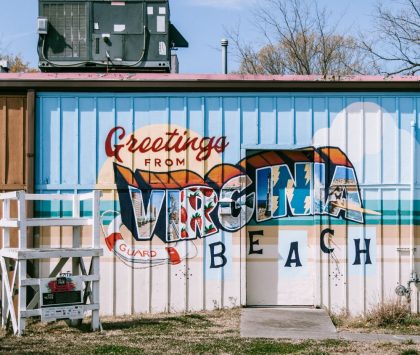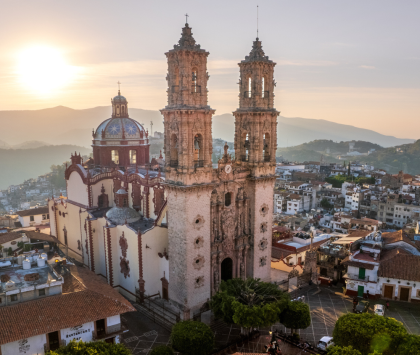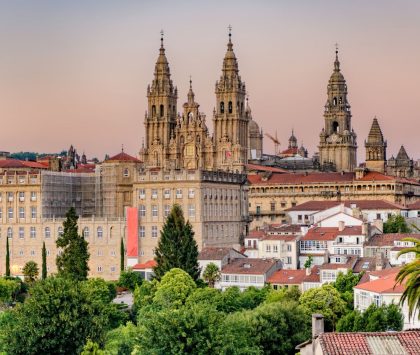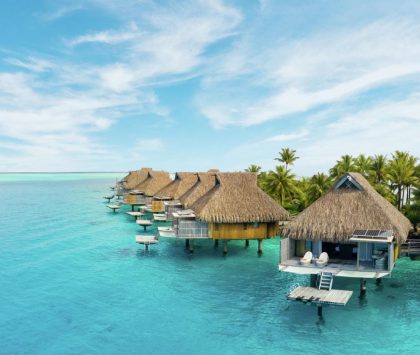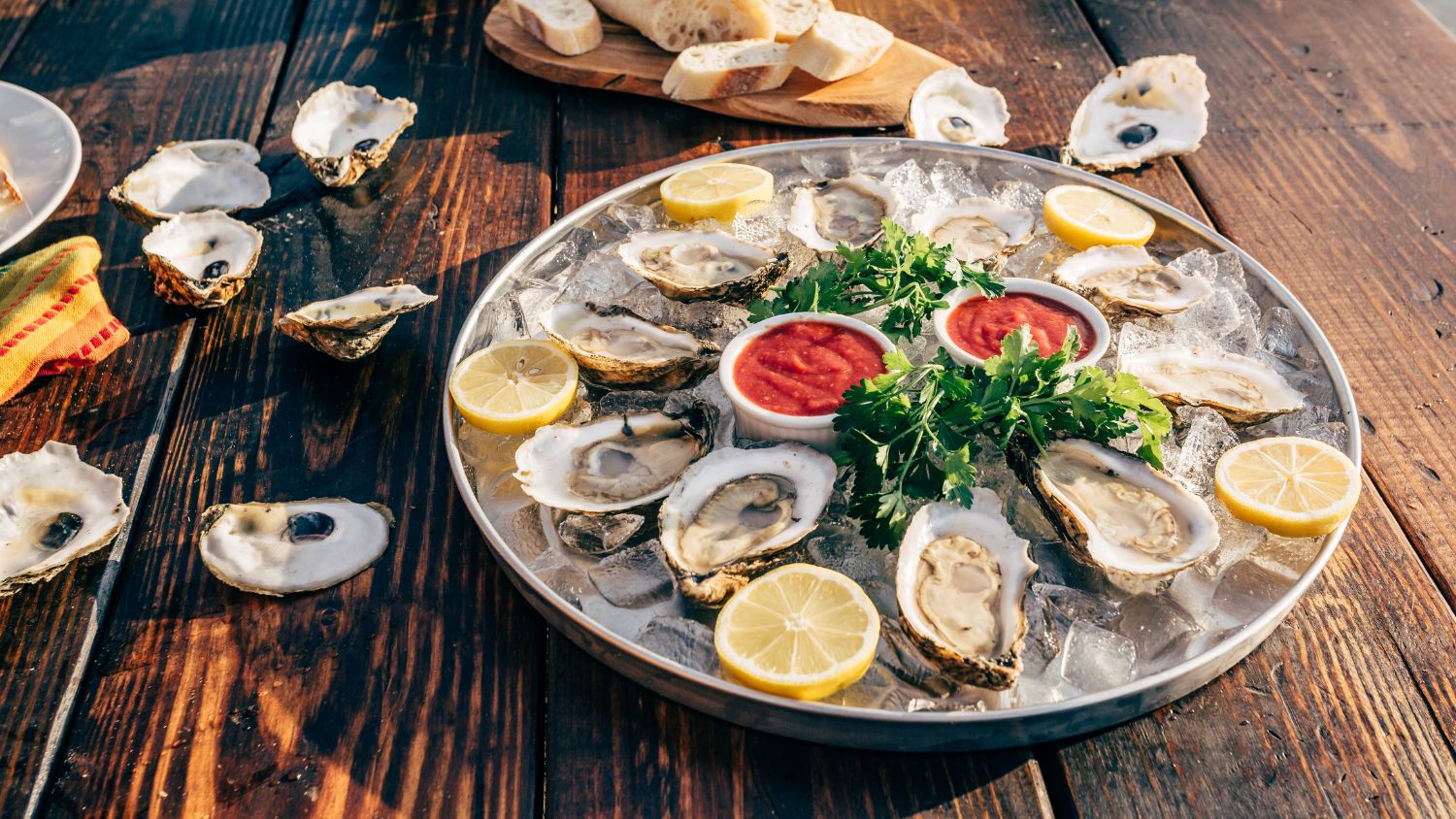
“I think we’re going to be friends, Miss Vivian. It’s such a lovely name to say.”
THIS VIRGINIA GENTLEMAN’S twang is coming at me from Chris Ludford, while shaking my hand, and looking down at me from under his wide-brimmed straw hat. Under said brim, I spy friendly eyes, a broad smile and his Santa-white beard, which has gone a bit wild, with ringlets that would make any curly-haired beauty envious.
At first sight, Ludford appears to be a displaced hippy surfer, all long limbs and board shorts and flip flops. But he’s got a story that is much more than his cover. He hails from a long line of Watermen; generations of (mostly) men who made their living on the water, fishing, boating, caring for the sea. And it’s no wonder. We’re in Virginia Beach, on the Lynnhaven river just off Chesapeake Bay, and he’s telling us a bit about his provenance. The Waterman life wasn’t enough for Ludford, and he soon trained to be a firefighter. He rose in the ranks, but when it came time to hang up his hat, he didn’t just retire. He went back to the water. This time, it was the Bay’s oyster- farming culture that beckoned, a siren call to return to what he knew and loved.

Set out on the Lynnhaven River with Pleasure House Oysters to taste legendary Lynnhaven Oysters and see how they’re harvested—an unforgettable, on-the-water experience. Photo: Virginia Tourism Corporation
“Oysters are not just the luxury food with a history; not just only for the elite, but being so precious that they’ve been fought over and started conflicts,” he says, while sizing me up with a pair of boots that will allow me to wade in the Lynnhaven’s shallows, which flow into the Bay. Like our Maritime lobsters, the oyster was once a plentiful food for everyone including the Indigenous people of this place. Then, the oyster came up in the last turn of the century as a symbol of the rich and powerful – think Rockefeller, Gatsby, Astor. Serving oysters meant you’d made it, you were playing in the big leagues.
RELATED: Virginia Cultural Guide 2025: Top Art, History, Food & Travel Experiences to Add to Your Bucket List
But oysters are so much more, Ludford notes. “They are filters for the Bay, they add to the quality of the water here and of the environment.” Once we’re kitted out for exploration, we jump into Ludford’s motor boat and go for a short sail to where his oyster farms are located. “Show me your hand,” he says to me. I do, and he touches my baby finger. “When an oyster starts out, it’s no bigger than the nail on this finger,” he points. “When it gets a little bigger, this is what I plant, and take care of.” We climb carefully out of the boat and trawl gently to what I think is a little sprout of land cropping out of the surf a few metres away. To the untrained eye, you’d have no idea that there are oyster cages submerged close by, and that these sprouts of land, complete with tall green grasses, are mostly made up of used oyster shells. “Look here,” he gestures excitedly. “New oysters have attached themselves to the old shells and are thriving.” I take a closer look, and it’s true. I can see tiny oysters, like barnacles, piggy- backing on bigger shells, like a family support group.
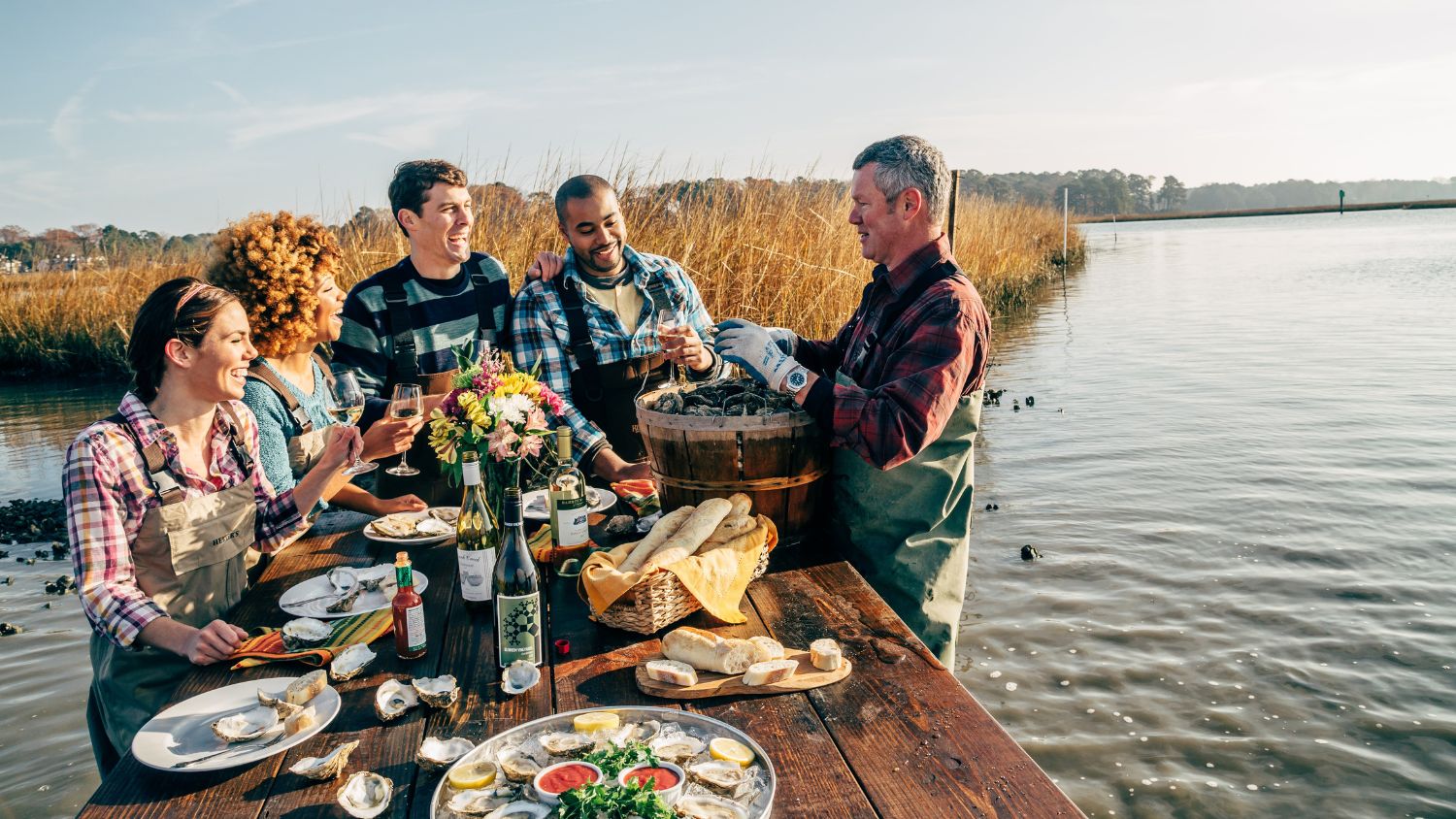
Photo: Virginia Tourism Corporation
The little island is home to oysters, but also to crabs and other sea creatures that, in turn, feed the numerous birds in the area. While we’re there, we spy Blue Herons, Ibis and Egrets, all peacefully feasting on the riches, which also indicates the health of the waters that feed it all. It’s our turn, and Ludford returns from the boat with his supplies for his “Chef ’s Table,” where he treats his guests to an oyster tasting while standing in the Lynnhaven, from the very water in which they’re farmed. This is laser local at its finest.
Everything he brings out has a story, from the large salvaged wooden door he uses as a table top to the old cages he uses as table legs. He sets it up in the shallows, just on the edge of the slip of beach that’s naturally been carved out by the tide. His farming, like his hosting, is all done with care, by hand, never industrialized. It’s rustic and real, charming and luxurious. He has harvested some for us fresh that morning; briny, sweet, mild and so fresh, they’re easier on the palette than many oysters I’ve tried – and a wonderful, savoury way to get our daily dose of immune-boosting zinc. “I recycle the shells, too,” he indicates a bin with empty, sun-bleached shells; they are used for jewelry and decoration, by local artists and craftspeople.
Speaking of stories, why Pleasure House? Rewind a few hundred years, to the founding of Virginia, the first place English explorers set their wandering eye on. Settlers made this part of the world their home, and within it a place named Pleasure House Point near its eponymous creek, Ludford says, where men would gather for a drink; spirits of the liquid and convivial variety.
He’s set up an ad-hoc bbq/smoker, and he’s slowly cooking the oysters so that those of us who aren’t the raw type can still enjoy this bounty from the river. “They’re still warm, so be careful,” Ludford advises, as he shucks the steamy, smoky bivalves and places them gently on our chef ’s table. He pours us a bit of bubbles to go with, and we toast to our good fortune, our good health and the goodness of mother nature. pleasurehouseoysters.com; virginia.org


